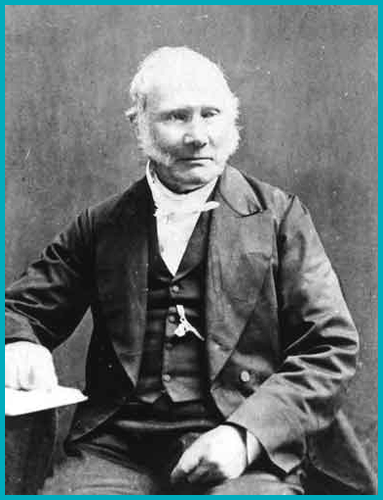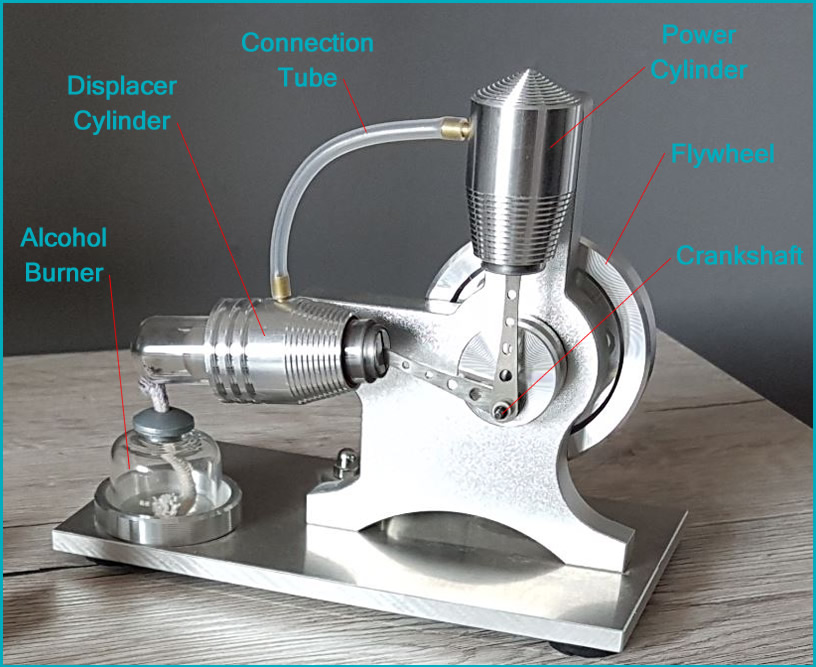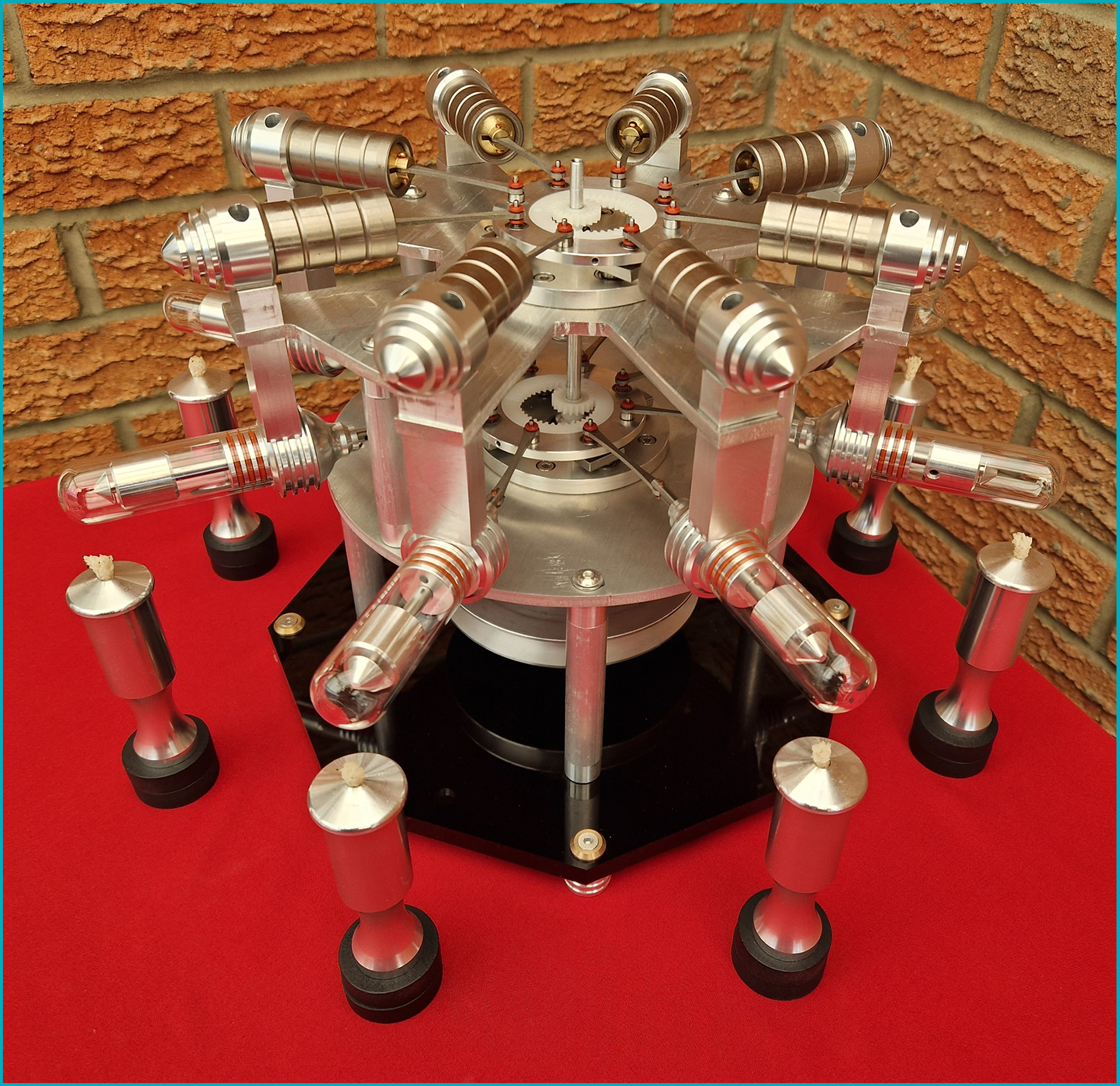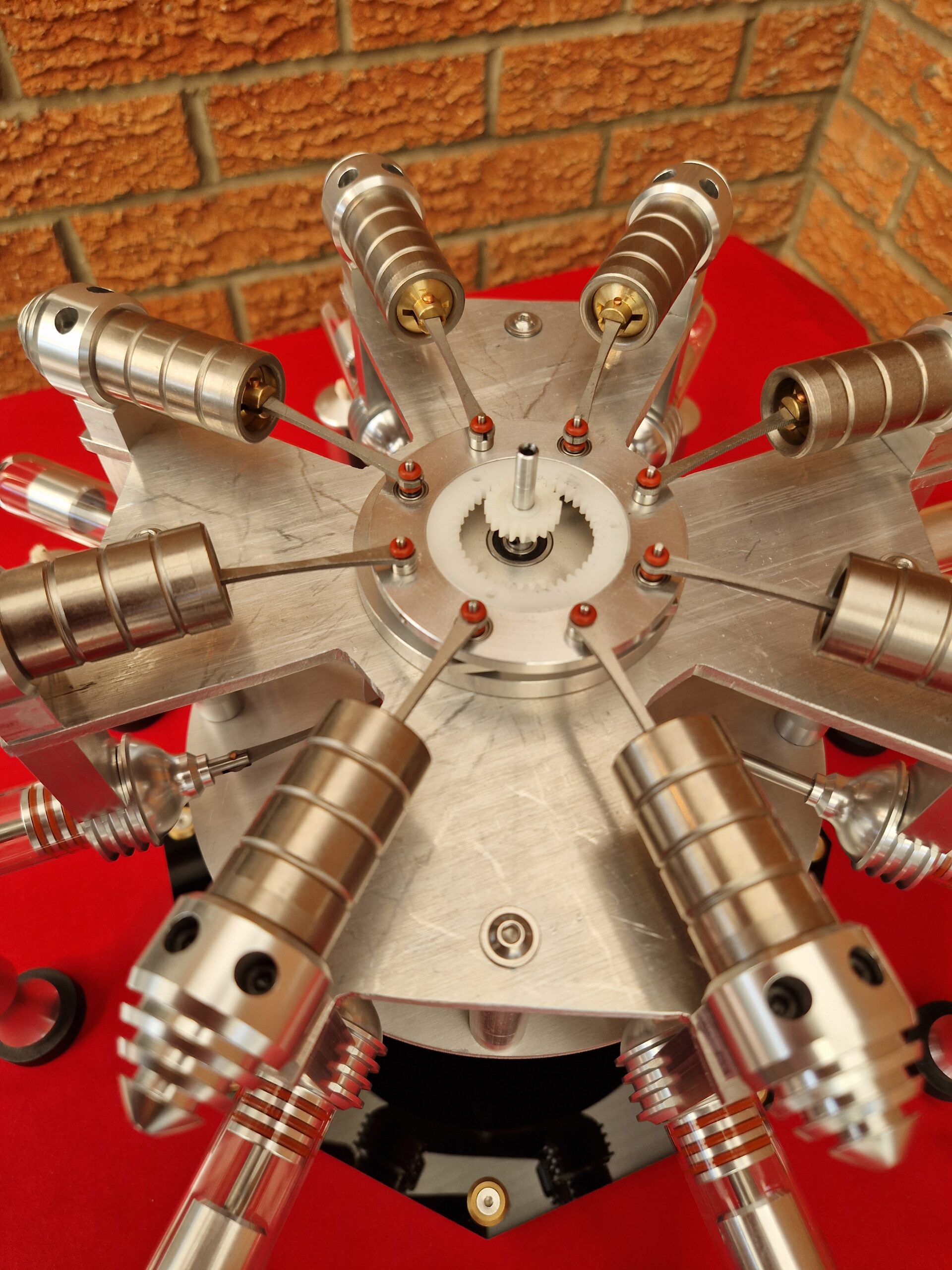8-Cylinder Radial Stirling Engine

The Stirling engine was first invented in 1816 by Robert Stirling as a safer and more efficient alternative to the steam engine. It is a closed-cycle regenerative heat engine which operates on the principle of thermal expansion and contraction of a sealed gas.
So how do these engines work? The image below shows a typical small Stirling engine which consists of two cylinders, the displacer cylinder and the power cylinder i.e., hot and cold. The displacer piston is a loose fit inside the cylinder which allows air to flow around it, whereas the power piston is a close sliding fit inside the cylinder.
Both pistons have connecting rods which are attached to a single crankshaft, with the displacer piston being phased 90° ahead of the power piston. There is a flywheel connected to the crankshaft to aid engine momentum and an alcohol burner for the external heat source.
Both cylinder volumes are connected via a tube which means there is a fixed amount of working air inside. The pressure of this air can be altered by adding or removing heat.

The Stirling engine has four phases which are heating, expansion, cooling and compression.
The air inside the displacer cylinder expands as it is heated up, which moves the displacer piston. Some of the heated air passes around the loose-fitting displacer and flows through the connection tube into the top of the power cylinder, this higher-pressure air will drive down the power piston.
Because the power cylinder is cold, the hot air is instantly cooled down which results in a pressure drop. This means less work is required from the power piston on the upward stroke to compress the cooler air back into the displacer cylinder, flywheel momentum helps to overcome resistance and the cycle can begin again.
As there is no combustion taking place these engines are very quiet and virtually emission free, and the ability to use the same gas repeatedly to generate power can prove to be more efficient than internal combustion engines. Stirling engines can be used to generate electricity from the waste heat of industrial applications.
My Stirling engine has 8 equally spaced displacer cylinders and 8 equally spaced power cylinders arranged radially around a vertical shaft. Each piston is connected via their respective connecting rod to an offset internal gear ring which is in constant mesh with a spur gear on the shaft.
Each internal gear ring is positioned by 4 cranks that constrains the movement to an orbital motion, which in-turn rotates the shaft in the opposite direction. The displacer gear ring is phased 90° ahead of the power gear ring and a flywheel is required to maintain engine inertia.


I think radial engines are pretty cool and I wanted to design a Stirling engine in this configuration. This is an experimental engine and I know the efficiency can be considerably improved by changing various parameters like the volume of the working air, cooling of the power cylinders, adding a regenerator and alternative heat sources.
For enquiries about this engine please email – info@teratek.co.uk – Thanks for stopping by, Mike.
